How long will it last? A dive into Chinese livestreaming e-commerce frenzy
by Maggie Yu & Davy Huang
In 2020, livestreaming e-commerce sales had been surging dramatically in China. According to iiMedia Consulting, the scale of China's livestreaming e-commerce market will likely reach 961 billion yuan in 2020, a significant year-on-year increase of 121.5%. It is expected that in 2021, the overall scale of livestreaming e-commerce will continue to maintain relatively rapid growth, and the scale will grow close to 1202 billion yuan.[1]
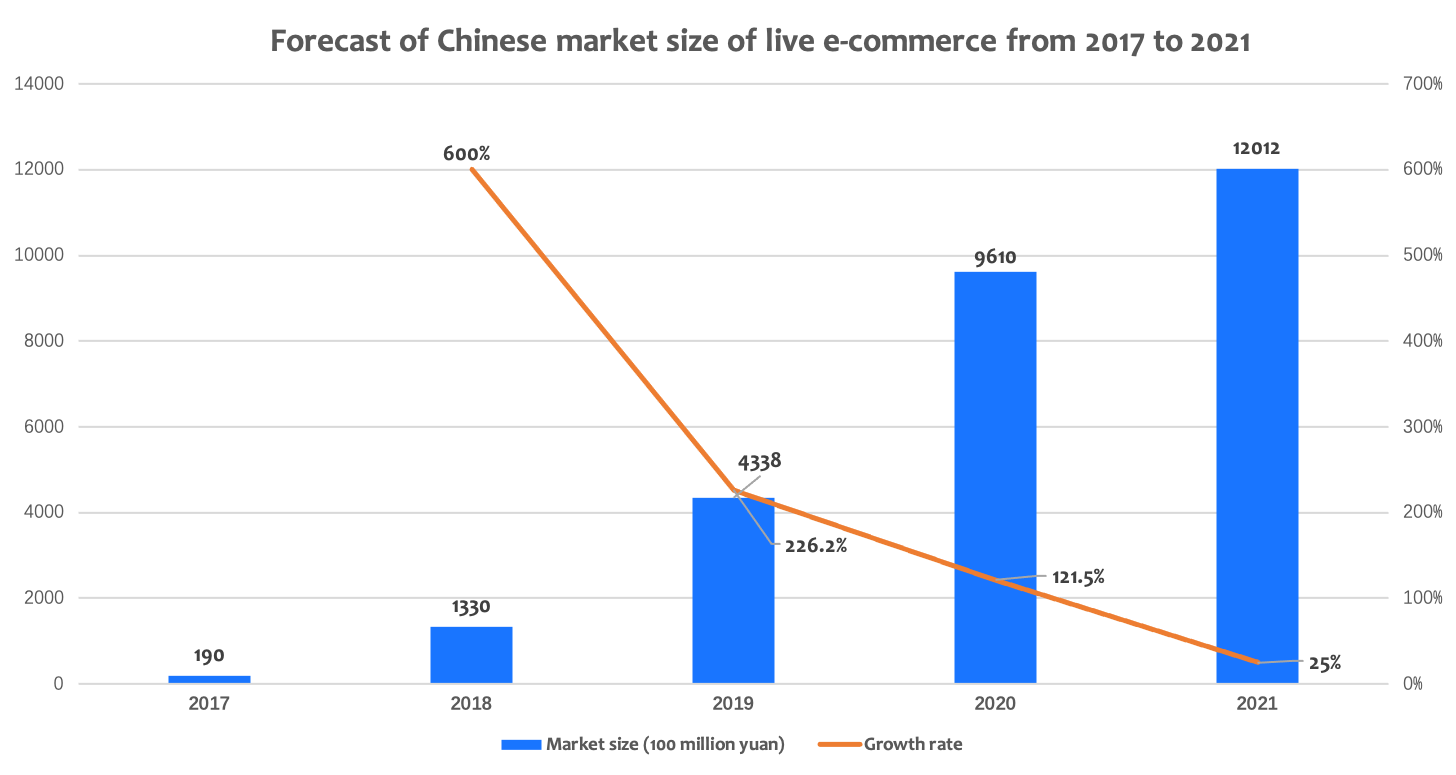
Source: IiMedia Data Center(date.iimedia.cn)
Is it any better than TV shopping?
Livestreaming for marketers is no longer a new and unexplored thing. Since the invention of television, there were a cohort of merchants running shows on TV and sell products via mail, and gradually grow into an industry since 1977. With the advancement of internet, QVC had quickly risen as a significant player in home shopping, and CNR as a Chinese counterpart. However, traditional TV shopping is less adopted by modern age retailers because producing such a show is costly – and there are limited ways to access the audience – only one time window at a channel.
Livestreaming isn’t just the online version of TV shopping. It’s a combination of mobile techonology, 4G/5G network, and a bunch of social features plus a much more diversified products assortment, which make it popular, and attract a larger audience. The traditional anchors are well trained professionals, but now everyone with a simple set up can live: mobile phone, lights, background, wireless mic – that’s everything needed to set up a livestream. Livestreaming in the internet age makes the production of a live show incredibly easy and accessible.
Apart from the change of technology, significant changes are happening on the anchors and format of the show:
l Demonstrate product selling points in a short period of time. Livestreaming is a much more effective method to capture customers attention. During the livestream events, brands can display how the product looks, how it can be styled and used. Compared to static image or video, livestream adds a level of personal touch of the anchors. Customers can get a closer look at the actual product, which will allow them to make a purchase decision much faster. Experienced anchors have a strong persuasion power, and he/she will use a very period of time to pitch customers the selling points of the products, demonstrating in person, and offer a limited-time discount that customers cannot refuse.
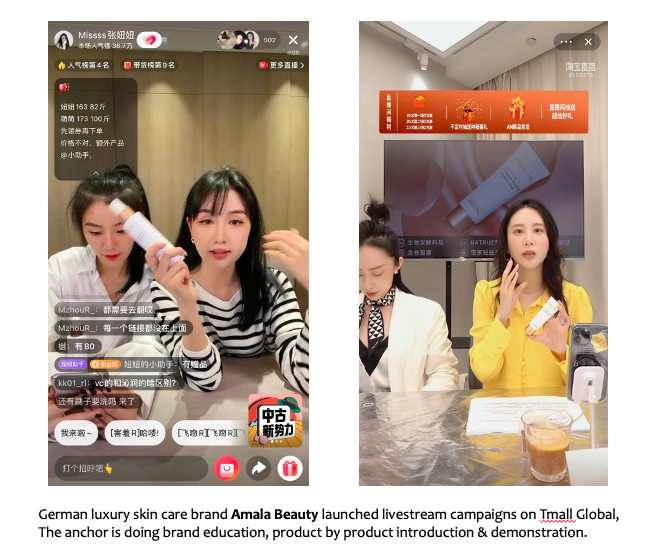
l Highly interactive, social, and gamified experience. During the livestreaming, audience can ask any question and get instant answers from anchors. This is very helpful in terms of getting their questions and concerns answered. To retain customers to watch the full shows anchors are also developing many interesting sessions, such as inviting celebrities to come to the show, a lucky draw at 9:00pm, and reinforcements such as coupons and giveaways when audiences bump up engagement. Research from iiMedia showed that customers are increasingly participating in the livestream campaign, as 20% showing a big increase of engagement rate, while 31.3% showing a minor increase of engagements.[2]

Source: IiMedia Data Center(date.iimedia.cn)
The purpose of engagement & interaction during live is obvious: customers are easily dropping out of a campaign if they feel dull and would loose attention to the live if there is nothing interesting. For brands, an interactive campaign also means a better education process, because customers have higher chance of remembering the brand and selling points. Lastly, incentive-based interactions are very effective to drive sales, such as vouchers, GWPs, which can lead to a better sales performance.
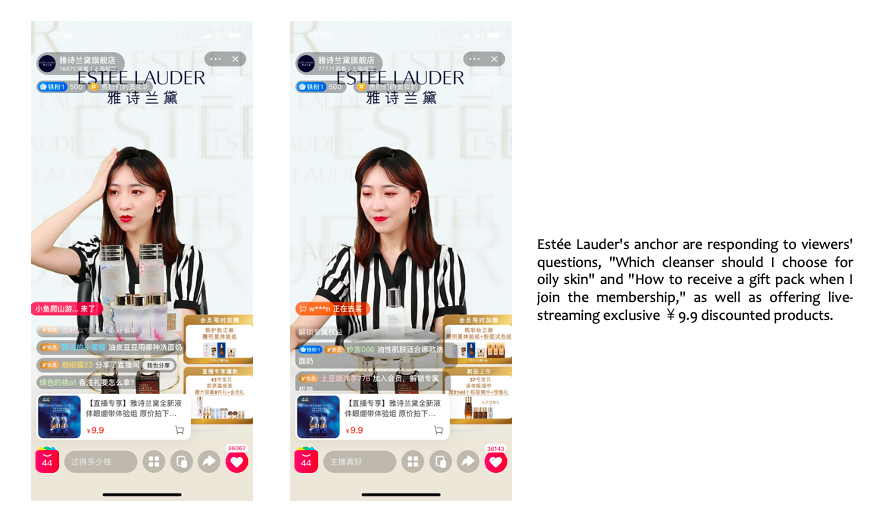
l Popularity of the anchor matters: One of the most popular anchors is Jiaqi (Austin) Li, also known as the “Lipstick King.” With over 6.5 million followers subscribing his livestream on Taobao Live, and a nightly audience of 2 million viewers, Austin Li once sold out 15,000 lipsticks in 5 minutes, and his vivid descriptions and objective reviews of the products attracted most of his fans. And his motivational slogan "OMG! Sisters, buy this!" "Are you ready to buy, buy, and buy?" stimulated many consumers to place orders. In addition, 26.7% of users also buy products because of the hot atmosphere of the livestreaming room, indicating that the strong interactivity of livestreaming e-commerce can promote the sales of goods. [3]
Kim Kardashian West's cosmetics brand "KKW Beauty" entered the Chinese market last year and leveraged major livestream anchors to break into the market. In 2020, KKW Beauty launched an overseas flagship store on Tmall Global, and launched a livestreaming event in collab with the Chinese major livestream KOL Viya. Before the livestreaming started, 6000 bottles of KKW perfume were already sold out in a pre-sale campaign. It is reported that by the end of the livestreaming event, through the strong recommendation of Viya, a total of 15,000 bottles of KKW perfume was sold.
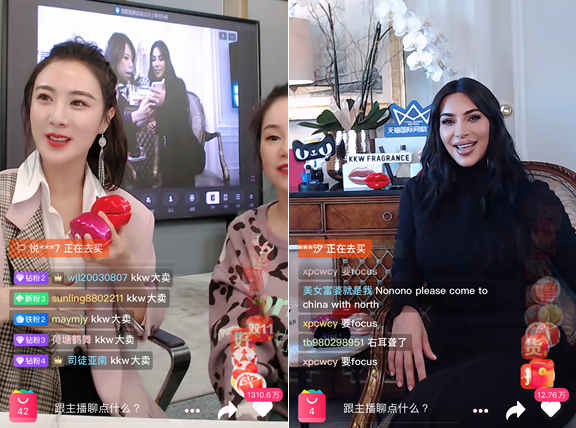
Source: CFI
l Create a sense of urgency. While livestreaming on particular platforms, brands can offer users exclusive & limited-time discounts and gifts available during the livestream. Customers feel that they will lose the deal if they don't place an order during the livestream, because it offers good discounts and limited stock. Another widely adopted methods leveraged by anchors are to split inventory by half, and live twice during a show. This creates a vivid experience to customers, when they see that the first 500 units are already sold out, and drives them to make a second purchase when the second half of stock arrives.
However due to this widely adopted practice, brands would often time face the requirements from major influencers to forecast and prepare a much higher inventory – while the actual sales could vary. This adds a certain level of uncertainties to brands prepping for a major influencer live. Key influencers – in order to protect their reputation – would also ask brands to ensure they are living the lowest price through-out a period of time: which could expand up to 2-3 months.
The impact of livestreaming e-commerce on Western Countries
Due to the lockdown caused by COVID-19, 2020 saw a new round of growth and change in the livestreaming e-commerce industry. What are the experiences learned from the Chinese market for western countries?
The Associated Press reported that the popularity of e-commerce livestreaming in China may be a reference for other countries. [4] Retailers in the United States and Europe affected by the epidemic can consider e-commerce livestreaming as a new marketing gimmick. Western e-commerce platforms are starting to follow the successful showcases of Chinese e-commerce giants, and promote its own version of "livestreaming" mechanism. Instagram has added shopping capabilities throughout its apps, including Instagram Live. Walmart recently began partnering with TikTok to offer its products via livestream. [5]
Amazon, the American top e-commerce platform has launched "Amazon Live" in April 2019. Amazon Live brings interactive, live video to the Amazon shopping experience allowing both Amazon hosts and individual brands to engage with shoppers in real-time, and showcase/demo products interactively. Currently, Amazon Live only targets sellers who have a brand registry. This is very attractive to sellers who already have brand loyalty, and at the same time it can more effectively open the gap with competitors.
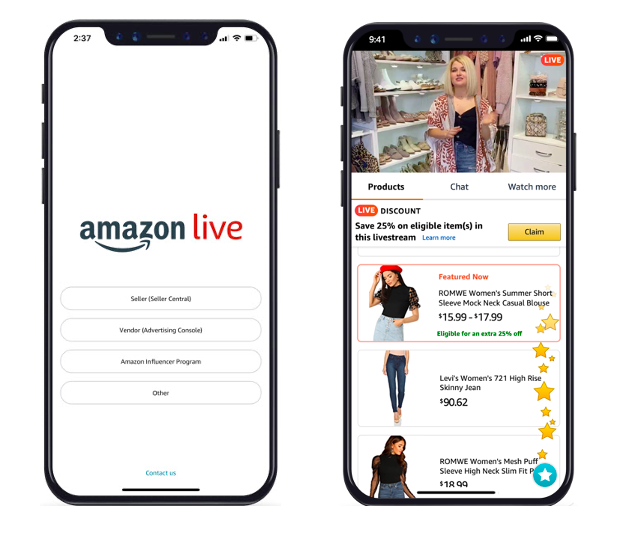
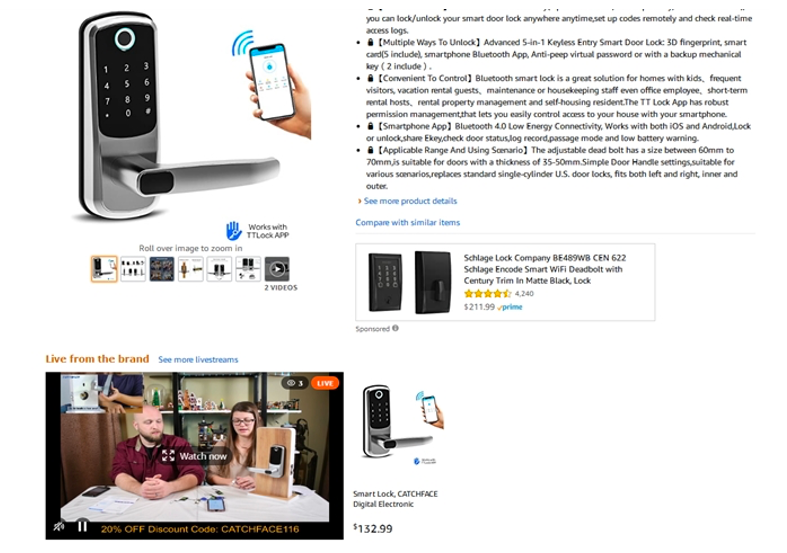
Source: Amazon official website
This frenzy of activity around livestream shopping reflects several facts. 1) Online consumption is exploding in the western countries, where penetration of e-commerce and social media is on the rise under the impact of Covid 19. 2) The function of livestream e-commerce demonstrated that it is not only a new marketing method, but also represents a growth new sales channel via streaming anchors or influencers, whose sales-driving potential cannot be underestimated. 3) the success of livestreaming e-commerce cannot live without a mature supply chain - the market potential will be further released once good products, with good prices, meet the right ‘sales rep’. 4) We believe that the livestream e-commerce will further drive consumption and shopping trends, maybe will soon become a normal activity for all major marketplaces in the western countries.
Have we reached the peak of livestreaming?
Livestreaming e-commerce is far from reaching its peak. As an emerging way of marketing and sales to consumers, livestreaming has deeply penetrated consumers' daily lives. The iiMedia consulting report shows that about 25% of livestreaming e-commerce users watch livestreaming daily. The proportion of users who watch e-commerce livestreaming every week is as high as 46%. [6] The rise of live-streaming e-commerce gives merchants a new method to access their potential customers.
Taobao Live had shared a recent data that total GMV through Taobao Live is over 400 billion CNY – which is a fast-growing number. The huge number of users, and the increasing adoption of livestream in brand’s daily marketing schedule is the foundation for the rapid development of livestreaming e-commerce. We believe that the livestreaming event frequency increase and sales increase is driven by both the demand (customers & audience) and the supply side (KOL & merchants).
Looking ahead at livestreaming e-commerce
Livestream shopping will continue to evolve with unlimited possibilities. In the era of digital economy, what will be the future development trend of livestreaming e-commerce?
Regulation has begun to tighten the control over livestreaming industry leading to a more regulated market in the future. A series of problems such emerged as livestream e-commerce took wind, such as the "sale of counterfeit products", "viewing number fraud" and “exaggerated claims” on livestreaming platforms. Curbing these activity will provide protection for the customers, anchors and brands.
Secondly, technology upgrade to bring diversified online consumption experience. With the landing of 5G technology and standards, AI, VR, AR and other technologies gradually mature, the experience barrier between online shopping and offline shopping is gradually breaking down. For example, integrating VR and AR into shopping. Build a "real" consumption virtual scene for consumers, and achieve the purpose of "zero distance" contact between consumers and products. In addition, based on the livestreaming platform, through the 5G network, consumers can quickly and clearly discover product details.
[1] iiMedia: Livestreaming e-commerce industry data analysis, 2020; URL
[2] iiMedia: Data analysis of online livestreamingindustry, 2021; URL
[3] iiMedia: China's live e-commerce market research report in the first half, 2020; URL
[4] China Daily: Livestreaming helps China's economic recovery,2020; URL
[5] Techcrunch: Walmart to host a new livestream shopping event on TikTok, following successful pilot, 2021; URL
[6] Sina: Analyze the live broadcast e-commerce industry: Is it a temporary outlet or a future trend? 2020; URL